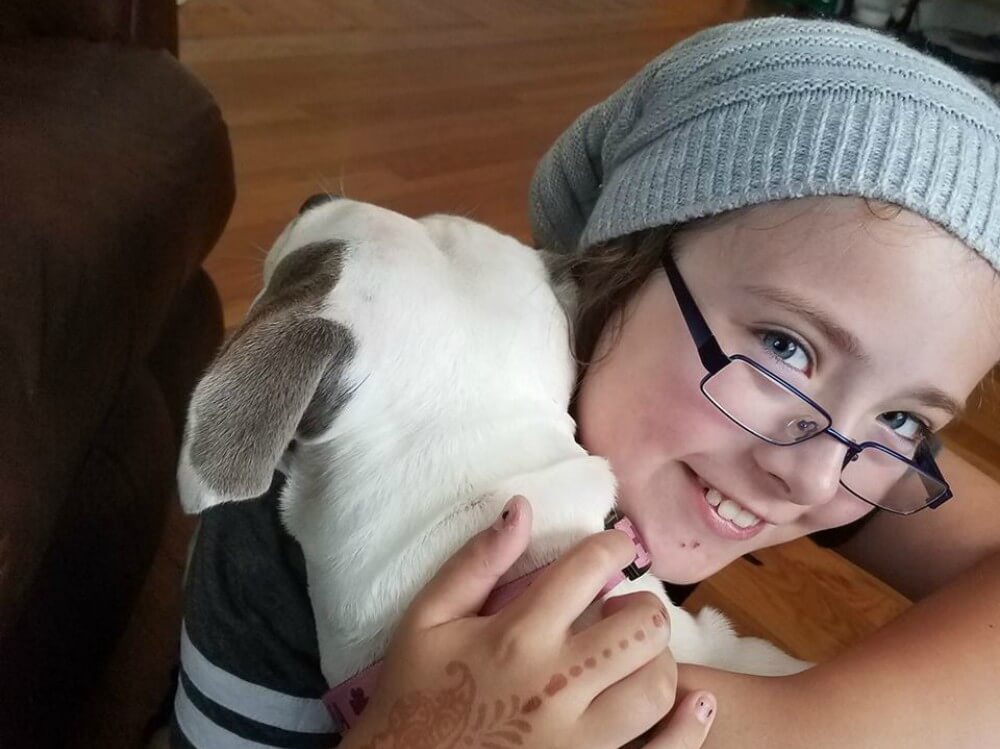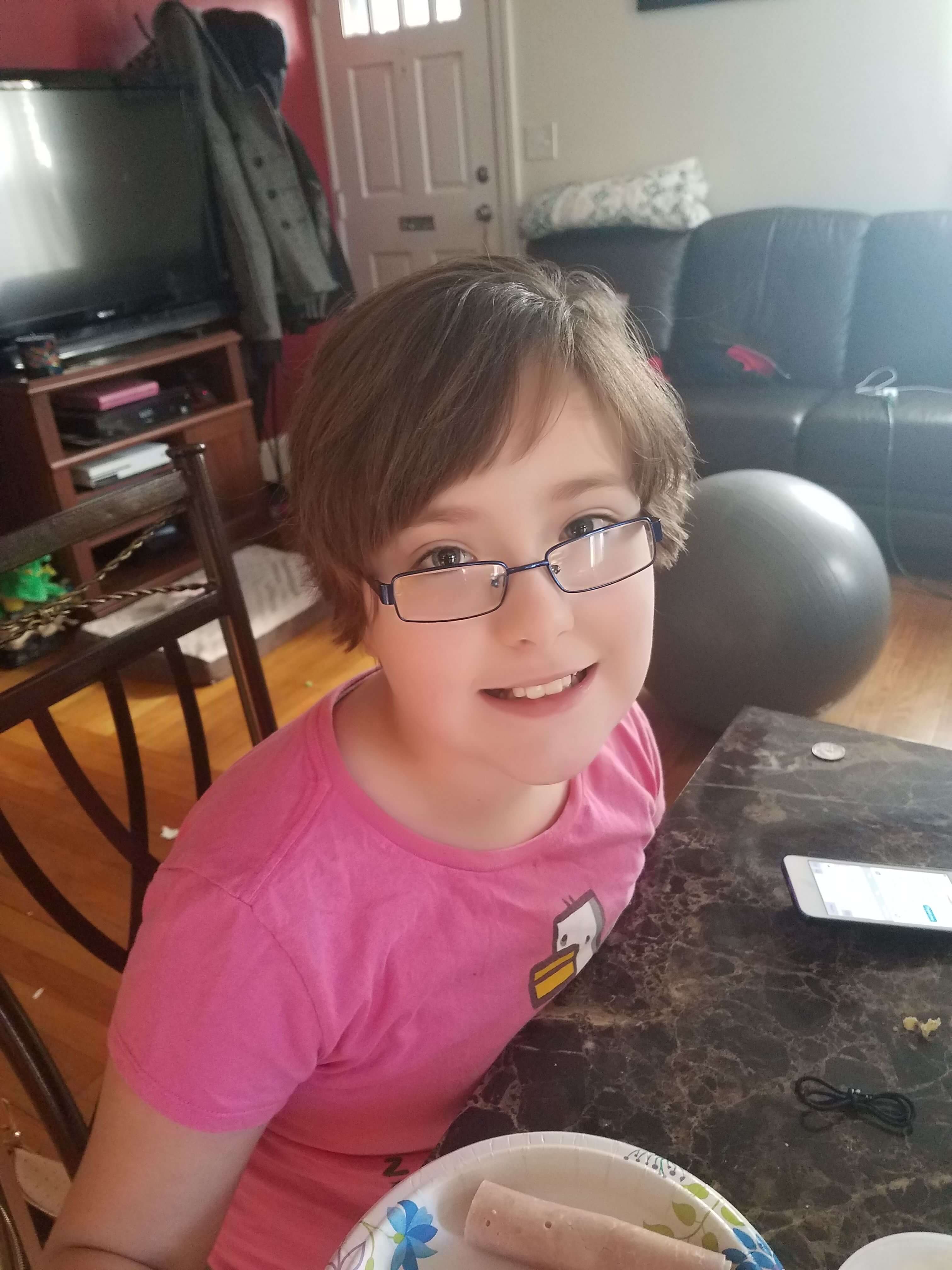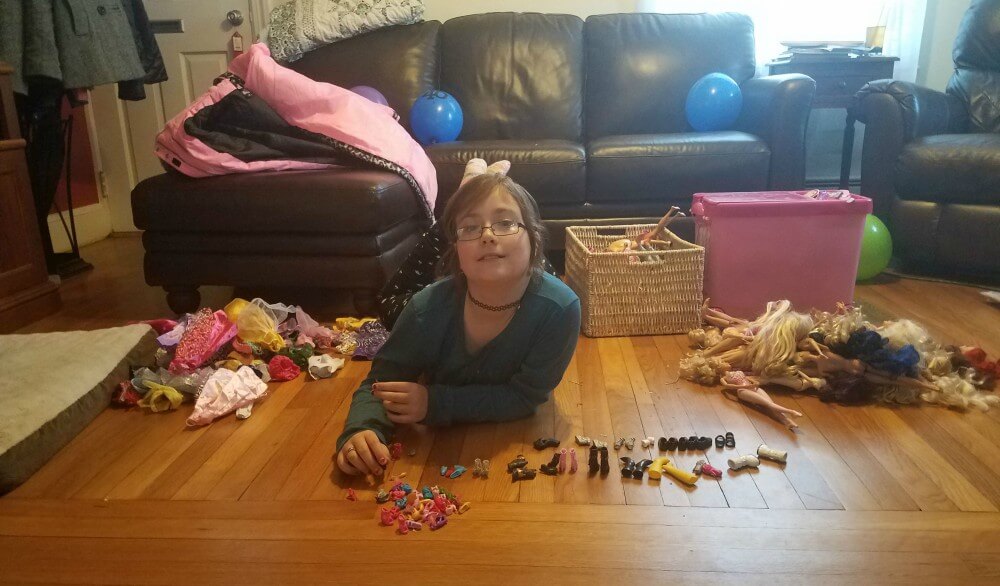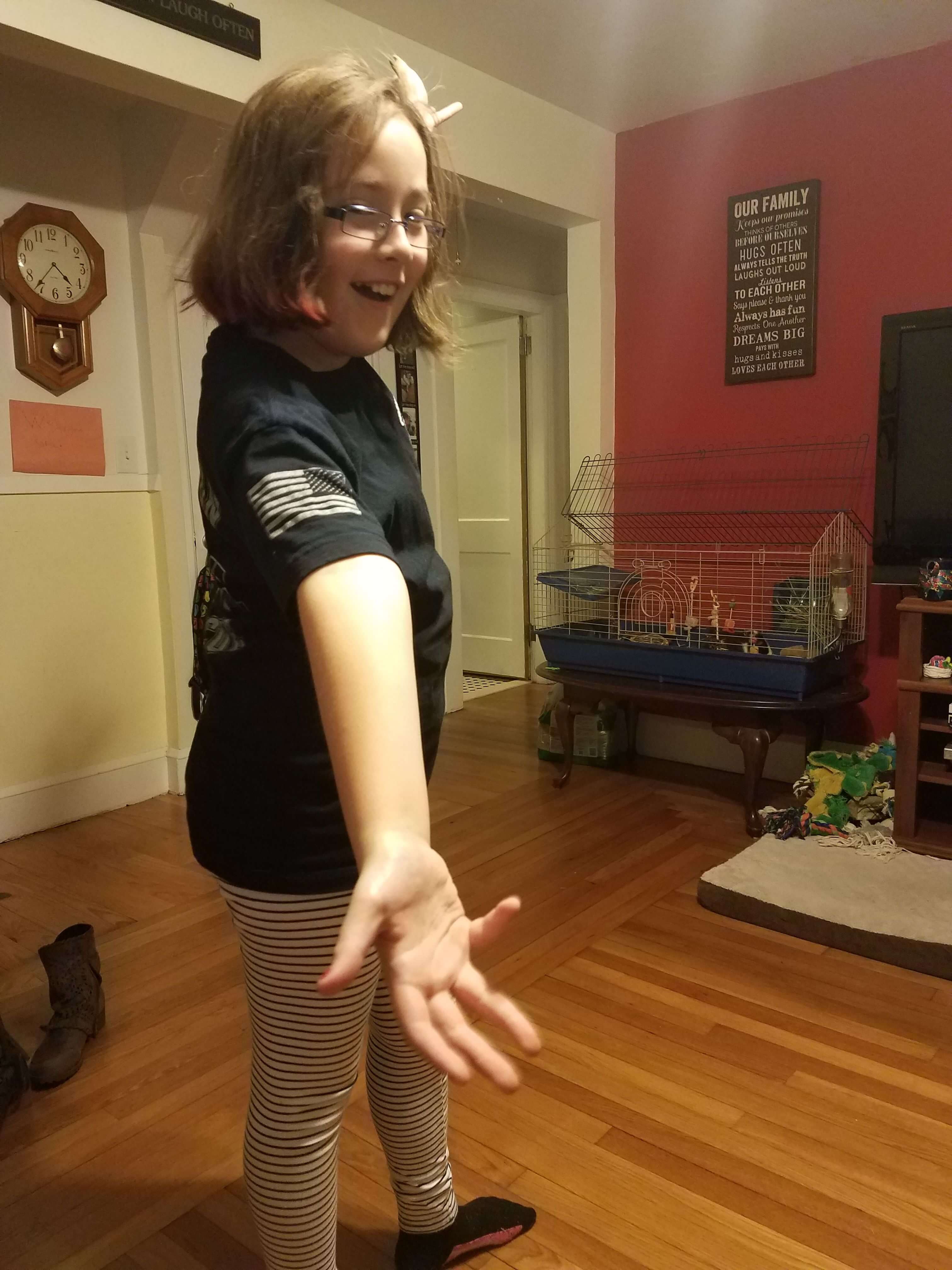Diagnosing Autism in Girls…Not So Easy

I’ve learned that girls with autism are better at masking their symptoms than boys. They are able to watch social situations between people, and then copy what is being done. So, when they have their own situation arise, they are often just using what they have learned from seeing other people interact.
Also, girls with autism usually have special interests but they are more in line with typical girls their age. But when you look closely, they are much more intense about them than typical girls.
Before my daughter Lillian was a year old, we realized that something was different. But not in the autism sense. She made eye contact, she was a very happy baby, she slept, she interacted.
It was that she couldn’t roll over, or use her gross motor skills very well. So, Early Intervention started and it was a struggle.
She had a gross motor delay. She walked one day and then the next, she couldn’t. She didn’t fully start walking until she was two years old. She also had sensory issues. We would try to put her down in the grass and up the feet would come. She did not like the feeling.
She also had trouble with loud noises from when she was born. A car beeping would send her into a crying fit. But we just thought she was sensitive with a gross motor delay. She had no language delay at all. In fact she was an early talker. But when she got a bit older, we noticed that she wouldn’t play with other kids the same way typical kids did. She would just play beside them and be passive. No one saw a problem with this.
Making Sense of it All
Her teachers said she was fine, but I would get to the school early to watch her, and she’d be playing by herself everyday, sometimes just wandering around. I didn’t really know anything about autism. All I “knew” was people with autism don’t make eye contact, aren’t interested in friends and have meltdowns.
She stimmed from the time she was able to sit up. She was always rocking. I still didn’t think anything of it.

As she grew a bit older, I noticed that she had interests in friends. She wanted friends, so it couldn’t be autism. She did have many repetitive behaviors and special interests, but they seemed in line with other typical girls, except that she was more intense about it.
She didn’t have meltdowns, but she also didn’t seem to know what to do when people were around. There were times when she would walk into a room and be in her own world and not even look at the people there. She didn’t realize she should say “hello.” Or, we’d be at a school function and she would see other kids from her class, and just walk right by them.
I didn’t know what was going on. But we went to a doctor and described everything that was going on and she almost immediately diagnosed her with autism. I didn’t believe it.
I went four more years not believing it and not getting any help.
Confusing Behaviors
The meltdowns started in second grade. She behaved fine at school, flew under the radar, but as soon as she would come home, it was a nightmare. She would hold it all together everyday and then come home and just couldn’t do it anymore.
She was constantly anxious, and engaged in more repetitive behaviors. She wanted to have friends, but she felt that everyone was against her. She thought that people were making fun of her when they actually weren’t. She couldn’t read tones of voice or body language. If someone laughed, it had to be that they were laughing at her. I started noticing more difficulties in social situations.
She was very literal and couldn’t understand sarcasm. She would have one friend and focus only on her and not understand that it was OK for her and the friend to have other friends. She still has trouble with this. Her play was bossy and controlling, and she didn’t deal well with change at all.
Transitions caused meltdowns and leaving the house caused meltdowns. She couldn’t go to stores because of the smells, and the noise. I also noticed that when she played with toys, she lined them all up. She loved making parking lots with cars, or sitting every one of her Barbie dolls in a circle. She would spend more time doing this than playing with them.

Rules were rules and absolutely had to be followed. She would make up her own rules and we would joke and call them “Lily rules.” But she wasn’t interested in technical things at all like spinning wheels, and she was extremely empathetic, overly so. I was so confused. But she was struggling to keep things together.
She had a lot of avoidance behaviors, and she couldn’t organize anything to save her life. She is still not able to clean her room alone. I have to tell her to pick an item up and tell her exactly where to put it. So, we had her evaluated again, this time more thoroughly. And the result came back the same.
Autism Spectrum Disorder and Generalized Anxiety Disorder.
I started researching girls with autism and that’s when I learned that girls can present very differently from boys with autism.
Masking Autism
Girls can mask their symptoms more than boys. Social issues come up more as they age. Girls special interests are similar to typical girls, it’s just that they are more intense.
For example, Lillian loves Harley Quinn. But she knows everything there is to know about her. She impressed the owner of a comic book store because she had so much knowledge about her at the age of 9, he ended up giving her some books for free.
She likes to be fashionable, she likes music, it’s just more intense. I learned that girls are often too empathetic, too sensitive, and that’s how she is. She is also able to respond to non verbal communication a little bit. More so than boys with autism can typically. And girls with autism tend to want friends, as Lillian does. She has trouble maintaining relationships with friends though. As soon as there is a bump in the road with a friend, she thinks the whole friendship is over.
She is great at mimicking others in social situations. I have had more people tell me that she absolutely doesn’t have autism than people who have believed me. But, I didn’t believe it myself for four years!
People don’t understand that there are differences. But they need to. Because so many girls are likely flying under the radar and not getting the help they need.
I’m glad I trusted the diagnosis the second time and started doing research. My hope is that by writing my blog, I can educate as many people as possible so that girls with autism have a better chance at getting the help that they need. And also in getting the acceptance that they need.

Written by, Jenn Karboski
Jenn’s daughter Lillian was diagnosed at age four with Autism. She shares their journey on the Facebook page, Autism and Lillian: A Girl’s Journey and hopes to bring more awareness and acceptance to girls on the spectrum.
Interested in writing for Finding Cooper’s Voice? LEARN MORE
Finding Cooper’s Voice is a safe, humorous, caring and honest place where you can celebrate the unique challenges of parenting a special needs child. Because you’re never alone in the struggles you face. And once you find your people, your allies, your village….all the challenges and struggles will seem just a little bit easier. Welcome to our journey. You can also follow us on Facebook and subscribe to our newsletter.

